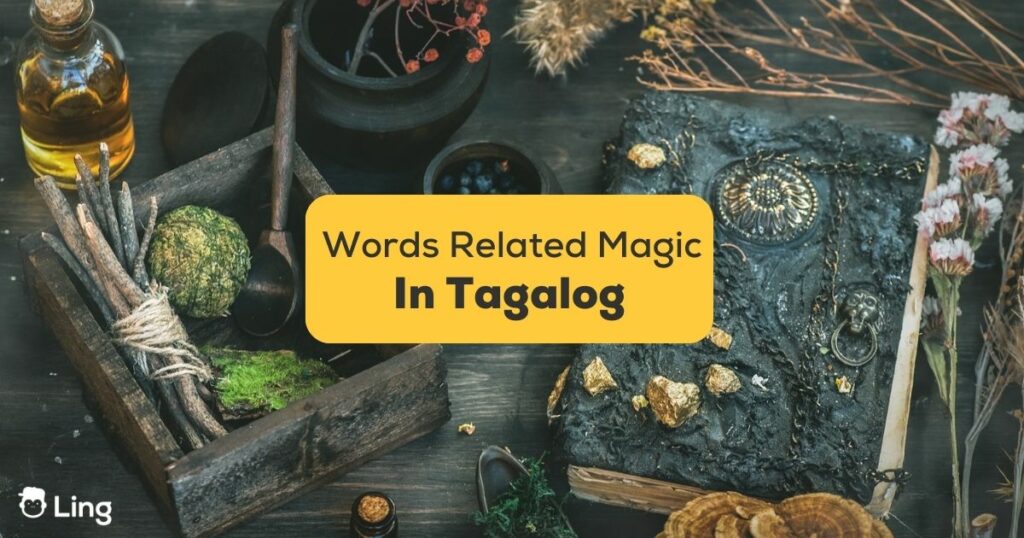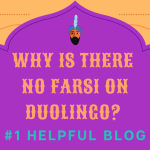Greetings, dear knowledge seekers! In today’s captivating journey, we’ll explore the mystical realm of Tagalog words for magic or mahika. These enchanting phrases from the Philippines are bound to cast a linguistic spell on your ever-curious mind. Are you ready to dive into the mesmerizing world where language and sorcery intersect? Then without further ado, let’s begin!
What Is “Magic” In Tagalog?
The direct translation of “magic” in Tagalog is “mahika“. It rolls off the tongue like a magic spell, doesn’t it? A distinctively melodious word, mahika can be used to describe the kind of enchantment that leaves you mesmerized. The sort is akin to witnessing a gorgeous sunset, or in our case, discovering a magical linguistic treat.
Let’s amp up the magical aura, shall we?
Have you ever heard of “salamangka“? If you haven’t, now’s the perfect time to add it to your magical vocabulary! This extraordinary word is another way to say magic in Tagalog, with a pinch extra: it brings the aura of sorcery and wizardry. Just picturing it might transport you to an otherworldly landscape of spellcasters and mystical deeds.
Let’s not stop here, though!
The word “hiwaga” is waiting in the wings, ready to amaze you! This term, often used to describe a mystical or superstitious phenomenon, is akin to the enchanting allure of the unknown in magic. It’s a kind of arcane beauty that tugs at your curiosity, leaving you marveling at the wondrous world of the unexplained.
Finally, let’s cap things off with the marvelously peculiar “kataka-taka.” Roughly translated to “astonishing,” “puzzling,” or “amazing,” it embodies the inexplicable beauty and intrigue of magical phenomena. Use it, and you’ll leave your listeners pondering in awe, their minds tickled with bewilderment.

Do Filipinos Believe In Magic?
Magical beliefs are often reflective of a culture’s rich history and tradition, and the Philippines is no exception. From ancient times, an intricate belief system revolving around magic, supernatural beings, and the influence of spirits has been deeply embedded in Filipino culture.
In the past, magic was part and parcel of Philippine society, with babaylan or spiritual leaders wielding significant authority. Their perceived abilities to heal and conduct magical rites formed an essential part of community life.
And then there’s a delightful tradition that adds an extra sprinkle of charm to the local celebrations: hiring a magician or magikero/salamangkero! Are you wondering what on earth a Magikero might be? According to the locals, a magikero is not just an ordinary magician – oh no, they’re beloved entertainers adding a dash of the unexpected to any celebration (usually birthday parties).
Fast forward to the present day, and elements of these ancient beliefs persist. Magic, charms, and mythical creatures continue to feature in the cultural consciousness, often intertwined with religious practices. Testaments to this unique interplay of mysticism and faith are observable in folklore, celebrations, and daily customs.
However, the advent of modern science and technology challenges the longevity of these beliefs. The younger Filipino generation, while cognizant of their cultural history, often perceive these magical narratives as heritage rather than accurate portrayals of reality.

Basic Tagalog Words For Magic
Stepping into the realm of linguistics, we find that the Tagalog language offers a rich tapestry of terms related to magic and illusions. This lexicon is reflective of the country’s cultural landscape, where tradition and entertainment coalesce. Here is a brief taxonomy of Tagalog terminologies associated with the art of magic.
Illusion – Ilusyon
Swap your magician’s cape for an “Ilusyon,” the Tagalog term for illusion. The essence of magic lies in creating entrancing images that beguile the senses, all while concealing the truth of their formation. When a magician bedazzles you with spellbinding feats, remember – it’s all just an “Ilusyon!”
Broom – Walis
Now, dust off your Tagalog vocabulary because “Salamangka” has gracefully swept aside for the humble, yet mystical, “Walis.” You’ve guessed it right, it’s the Tagalog word for a broom! Steering away from its usual household fame, in the magical lexicon, “Walis” excites images of witches soaring across the night sky, an essential tool for any self-respecting sorceress. So, next time you pull out a broom, pause, and let your imagination take flight!
Fairy – Engkantada
In a fascinating twist of syllables, we’ve drifted from sleight to… fairies! That’s right, “Engkantada” is the Tagalog term for a fairy. Their mention floods our minds with tales of enchanting beings flitting through ancient woods, with magical powers at their tiny-fingered disposal. Just whisper “Engkantada,” and let the magic flow!
A Thing To Shock Someone – Panggulat
Now here’s a word with a lot of punch packed into three dynamic syllables – “Panggulat!” This energetic term refers to a sudden shock or surprise, similar to our reactions when a magician pulls off an unbelievable trick. Next time you witness a magic trick that leaves you blinking in amazement, draw out this term to express your awe!
Deception – Daya
Not all is as it seems in the world of magic, isn’t it? That’s where “Daya” steps in, meaning deception. It refers to the crafty cunning that’s the fulcrum of magic tricks. A magician’s talent for “Daya” decides whether we’re left gasping ‘how did they do that?’, or a bit more laughably, ‘I saw that coming miles away!’
Imagination – Imahinasyon
Don’t you love the rhythm of that word? It’s as much a joy to pronounce as it is to experience. In the language of magic — and Tagalog — “Imahinasyon” is your imagination, the canvas on which all magical spells are painted. It’s the spark that lights up when we witness a rabbit pulled out of hat, or a card plucked mysteriously from a deck. Whenever a magic trick captures your senses, remember it’s your “Imahinasyon” at play.
Illusion – Guni-Guni
In Tagalog, “Guni-Guni” refers to an illusion or vision. Think of it as the echo of a magic trick, the residual image that dances before your eyes long after the trick has ended. It’s the card that wasn’t there before, the disappeared handkerchief, the floating woman—a fleeting image that makes you question reality itself. The power of a magician’s Guni-Guni? Absolutely goosebump-inducing.
Learn Tagalog With Ling
And there we have it, folks! We’ve performed a high-wire act across the vibrant circus of Tagalog magical terminology, from “Imahinasyon” to “Guni-Guni.” We hope you enjoyed the show. But remember, a magician never reveals all their secrets, and we’ve only just lifted the curtain on the rich world of the Tagalog language.
Whether you’re enraptured by the charm of “Guni-Guni” or fascinated by the allure of “Imahinasyon,” your journey into this enchanting linguistic realm doesn’t have to stop here. Whip out your magical learning wand (or, in muggle terms, your smartphone) and let the Ling app guide you further into the captivating world of Tagalog.
Ling is a gamified language-learning tool designed to help you master Tagalog and 60+ other languages interactively. With its advanced features and fun games, it’s impossible not to fall in love with this app right away! Ready to add more sorcery to your Tagalog spellbook?
Well then, what are you waiting for? Dive right into this linguistic adventure by downloading the Ling app from the App Store or Play Store now!































































